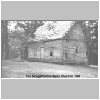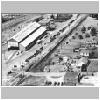|
|
 |
PHOTOGRAPHS OF GREENVILLE COUNTY
Click on the icons for a larger view.
|
|
 |
Cool Springs Primitive Baptist
Church was
established 7 December 1834. At first named "Head of
Mush Creek" church
the members resolved to change the name to "Cool Springs" in March,
1840.
This old church building still stands in the upper part of the
County.
Note: This is not
Mush Creek Baptist Church. |
 |
Brushy Creek
Baptist Church
cir. 1940. One of the first established churches
in the county, this
building was constructed in 1900 and remodeled about
1919. |
 |
Double Springs
Baptist Church
Organized in 1801, rebuilt in 1855, again in 1872, and this photo
from
the 1913 building. |
 |
Poplar Springs Methodist Church
cir. 1910 - 1920 |
 |
Small Town in Greenville
County
If you recognize this small town
please contact the contributor
|
 |
Mauldin School
was built before 1900 on the south side of East Butler Avenue in the
locality of
Mauldin Methodist United Church. Sometime before 1910
there was an additional wing added to
the school. There was a
porch on the new wing, which is where the students are standing in the
picture. A new 2-story, brick school was built around 1922 across
the street from old school. It
later burned in 1935.contact
the contributor. |
 |
C. B. Burns,
Pastor at Fews Chapel Methodist Church. |
 |
Greenville Steel and Foundry,
1939, located on the "Super Highway" (today Wade Hampton
Blvd.).
The building was situated between the old Airline Railroad and
P&N Railroad. |

 |
Poinsett Bridge
was constructed in 1820 along the old road from Greenville, S.C. to
Asheville, N.C.
It is the oldest surviving bridge in South Carolina.
Named for Joel R. Poinsett, a prominent early
resident of Greenville, Poinsett's name is also associated with several other landmarks in
Greenville. |
|
|
|
|
|
| |
|